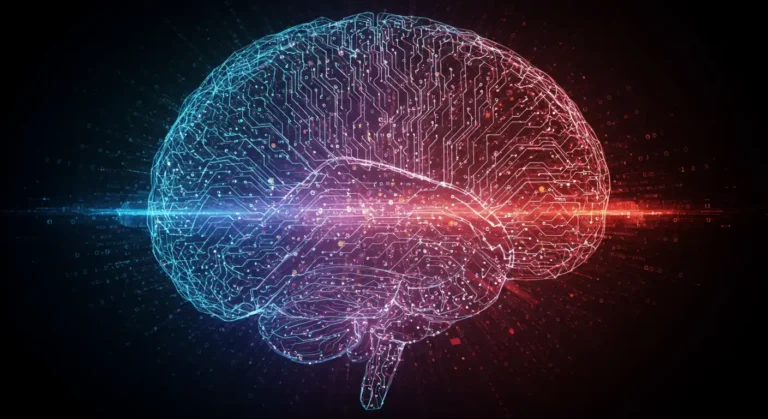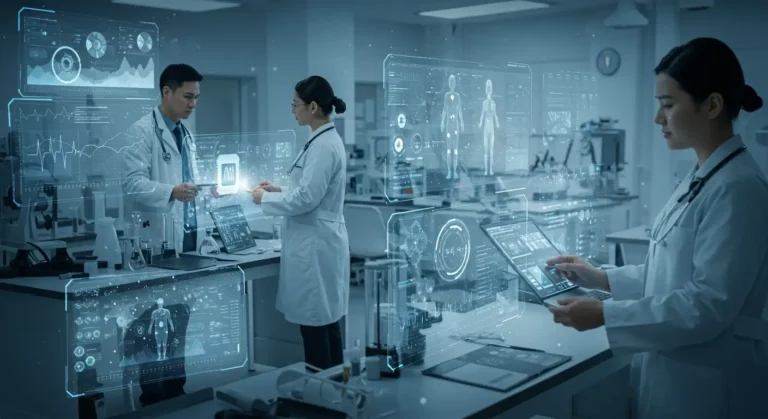The Impact of AI on the Job Market: Threats and Opportunities
1. Introduction
Artificial Intelligence (AI) has rapidly transitioned from the realm of science fiction to a pervasive force shaping our modern world. At its core, AI refers to the ability of computer systems to perform tasks that typically require human intelligence, such as learning, problem-solving, decision-making, and language understanding. This encompasses a broad spectrum of technologies, from simple rule-based systems to complex deep learning models capable of analyzing vast amounts of data and identifying intricate patterns. AI’s significance is evident in its growing integration across various sectors, from healthcare and finance to transportation and entertainment, profoundly impacting how we live, work, and interact.
The increasing prevalence of AI makes understanding its impact on the job market not just relevant but crucial. The rapid advancements in AI technologies have sparked widespread discussions and concerns about potential job displacement, the need for new skillsets, and the overall transformation of the labor landscape. It’s imperative to analyze these changes to effectively navigate the evolving world of work.
This article argues that AI’s influence on the job market is inherently dualistic, presenting both significant threats and unprecedented opportunities. While automation driven by AI may lead to the displacement of certain jobs, it also has the potential to create new roles, enhance productivity, and drive economic growth. The key lies in understanding these dual forces and proactively adapting to the changing dynamics of the labor market.
To explore this complex topic, this article will be structured as follows: We will begin by examining the potential for automation and job displacement across various sectors. Subsequently, we will delve into the transformation of existing jobs and the emergence of new roles requiring specialized skills. We will then analyze how AI can enhance productivity and create new opportunities for growth and innovation. The article will also address the important social and ethical considerations surrounding AI’s impact on employment, followed by a sector-by-sector analysis. Finally, we will discuss the crucial roles of government and businesses in managing this transition and conclude with a forward-looking perspective on the future of work in the age of AI.
2. Automation and Job Displacement
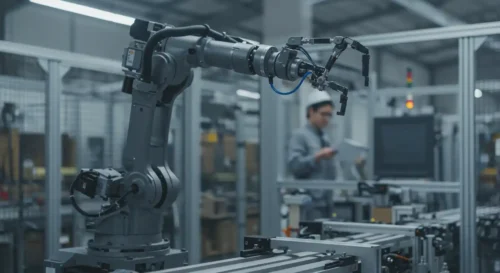
One of the most prominent concerns surrounding the rise of AI is its potential to automate tasks previously performed by humans, leading to widespread job displacement. Certain types of work are particularly susceptible to automation due to their repetitive, rule-based, or easily codifiable nature. These include:
- Routine Tasks: Jobs involving repetitive manual labor, such as assembly line work in manufacturing or data entry in administrative roles, are highly vulnerable. AI-powered robots and software can perform these tasks with greater speed, accuracy, and consistency than humans.
- Physical Labor: Tasks involving predictable physical movements, such as driving, warehousing, and certain agricultural activities, are also at risk. Self-driving vehicles, automated warehouse systems, and robotic harvesters are already being deployed in these sectors.
- Data Processing: Jobs centered around collecting, processing, and analyzing large datasets are increasingly being automated by AI algorithms. This includes tasks such as data entry, bookkeeping, basic accounting, and even some aspects of financial analysis.
Several studies and forecasts have attempted to quantify the potential impact of automation on job losses. While precise predictions are challenging due to the rapid pace of technological development, the overall trend suggests a significant transformation of the labor market. For example, reports from organizations like McKinsey and the World Economic Forum have estimated that millions of jobs could be displaced by automation in the coming years. These estimates vary depending on the specific methodology and assumptions used, but they consistently highlight the potential for significant disruption.
The impact of automation is not limited to any single skill level. While low-skilled jobs involving routine manual labor are often cited as the most vulnerable, advancements in AI are also beginning to affect white-collar professions. Tasks such as legal document review, basic medical diagnosis, and even some forms of creative writing are becoming increasingly automated. This suggests that the impact of AI will be felt across a wide range of skill levels, requiring workers at all levels to adapt and acquire new skills.
Here are some examples from various sectors:
- Manufacturing: The use of robotic arms and automated assembly lines has been a trend for decades, but advancements in AI are making these systems even more sophisticated. AI-powered robots can now perform more complex tasks with greater dexterity and adaptability, further automating manufacturing processes and reducing the need for human labor on the factory floor.
- Transportation: The development of self-driving trucks and delivery vehicles has the potential to significantly disrupt the transportation industry. While widespread adoption is still facing regulatory and technological hurdles, the long-term trend points towards increased automation in this sector.
- Customer Service: AI-powered chatbots and virtual assistants are becoming increasingly common in customer service roles. These systems can handle a large volume of customer inquiries simultaneously, providing instant support and reducing the need for human customer service representatives for routine inquiries.
- Retail: Automation is transforming the retail sector through self-checkout kiosks, automated inventory management systems, and AI-powered personalized recommendations. These technologies are streamlining operations, improving efficiency, and reducing the need for human staff in certain roles.
It is important to note that while job displacement is a legitimate concern, automation also creates opportunities for new types of work and can free up human workers to focus on more complex, creative, and strategic tasks. The next section will explore this aspect in more detail.
3. Job Transformation and the Need for New Skills
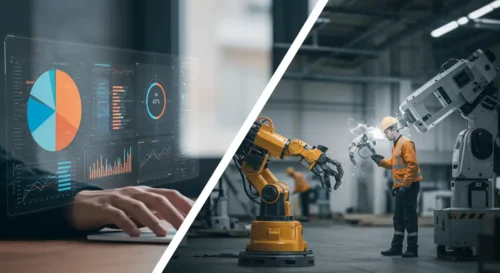
While automation driven by AI undoubtedly poses a threat to certain jobs, it’s crucial to recognize that its primary impact will likely be the transformation of existing professions rather than their complete elimination. AI is increasingly being integrated into various workplaces as a tool to augment human capabilities, leading to a shift in the nature of work itself. This transformation necessitates a focus on acquiring new skills and adapting to evolving job requirements.
The changing nature of existing professions under the influence of AI involves a shift away from routine, repetitive tasks towards more complex, analytical, and creative endeavors. As AI takes over mundane and predictable aspects of work, human workers are freed to focus on:
- Analytical Tasks: Analyzing data generated by AI systems, interpreting results, and making informed decisions based on these insights will become increasingly important. Skills in data analysis, critical thinking, and problem-solving will be highly valued.
- Creative Tasks: Generating new ideas, developing innovative solutions, and engaging in creative problem-solving will remain uniquely human strengths. AI can assist with generating initial drafts or exploring different options, but human creativity and intuition will be essential for refining and finalizing creative outputs.
- Interpersonal and Communication Skills: As AI automates many transactional interactions, the value of human-to-human interaction will increase. Jobs requiring strong communication, empathy, leadership, and teamwork skills will remain in high demand.
- Strategic Thinking and Decision-Making: Defining strategic goals, setting priorities, and making complex decisions in dynamic environments will continue to be crucial human functions. AI can provide data and insights to inform these decisions, but human judgment and experience will remain essential.
This shift in job requirements is accompanied by the emergence of entirely new professions directly related to the development, implementation, and maintenance of AI systems. Some key examples include:
- AI Engineers and Developers: These professionals are responsible for designing, building, and deploying AI models and systems. They require expertise in programming, machine learning, deep learning, and other related fields.
- Data Scientists and Analysts: These roles involve collecting, cleaning, analyzing, and interpreting large datasets to extract valuable insights that can be used to train AI models and inform business decisions.
- AI Ethics Specialists: As AI becomes more prevalent, ethical considerations surrounding its use become increasingly important. AI ethics specialists are responsible for developing ethical guidelines, ensuring fairness and transparency in AI systems, and mitigating potential biases.
- Prompt Engineers: With the rise of large language models, the ability to craft effective prompts to elicit desired outputs from AI systems has become a crucial skill. Prompt engineers specialize in designing and refining these prompts to maximize the effectiveness of AI tools.
- AI Trainers and Annotators: These professionals are responsible for preparing and labeling data used to train AI models. This involves tasks such as tagging images, transcribing audio, and annotating text.
To adapt to these evolving job requirements, reskilling and upskilling are essential. Workers need to acquire new skills in areas such as data literacy, digital technologies, critical thinking, and creative problem-solving. This requires a concerted effort from individuals, educational institutions, and employers.
- Educational institutions need to update their curricula to incorporate relevant skills for the future workforce, including AI literacy, data science, and computational thinking.
- Vocational training programs need to provide opportunities for workers to acquire practical skills in areas such as AI development, data analysis, and digital technologies.
- Employers need to invest in training and development programs for their employees to help them adapt to the changing demands of their roles.
By focusing on education, training, and continuous learning, individuals and organizations can effectively navigate the changing landscape of the job market and harness the potential of AI to create a more prosperous and fulfilling future of work.
4. Productivity Enhancement and New Opportunities
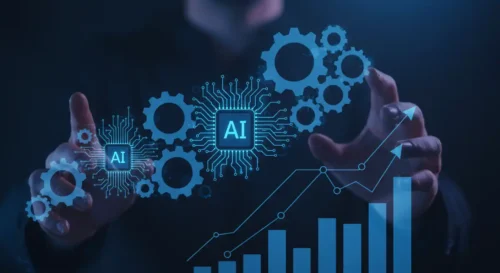
Beyond the concerns of job displacement, AI presents significant opportunities for productivity enhancement and the creation of entirely new avenues for economic growth. By automating routine tasks, optimizing processes, and generating valuable insights from data, AI empowers businesses and individuals to achieve more with less.
AI’s impact on increasing labor productivity and optimizing business processes is multifaceted:
- Automation of Repetitive Tasks: As discussed earlier, AI excels at automating repetitive and rule-based tasks, freeing up human workers to focus on more complex and strategic activities. This leads to increased efficiency and reduced operational costs.
- Data Analysis and Insights: AI algorithms can analyze vast amounts of data far more quickly and accurately than humans, identifying patterns, trends, and anomalies that would otherwise be missed. These insights can be used to optimize business processes, improve decision-making, and personalize customer experiences.
- Predictive Maintenance: AI can predict equipment failures before they occur, allowing for proactive maintenance and minimizing downtime in manufacturing and other industries.
- Supply Chain Optimization: AI can optimize logistics, inventory management, and supply chain operations, reducing costs and improving efficiency.
The creation of new products and services through AI is driving the development of entirely new markets and industries. Examples include:
- AI-Powered Personalized Recommendations: E-commerce platforms use AI to provide personalized product recommendations, increasing sales and customer satisfaction.
- AI-Driven Drug Discovery: AI is accelerating the process of drug discovery by analyzing vast amounts of biological data and identifying potential drug candidates.
- AI-Enhanced Customer Service: Chatbots and virtual assistants provide instant customer support, improving customer satisfaction and reducing costs.
- Autonomous Vehicles and Delivery Systems: Self-driving vehicles and delivery drones are creating new possibilities for transportation and logistics.
Furthermore, AI is being used to address some of the world’s most pressing global challenges:
- Climate Change: AI is being used to analyze climate data, predict weather patterns, and optimize energy consumption, contributing to efforts to mitigate climate change.
- Healthcare: AI is used in medical diagnosis, drug discovery, personalized medicine, and patient care, improving healthcare outcomes and reducing costs.
- Education: AI-powered personalized learning platforms can tailor educational content to individual student needs, improving learning outcomes and access to education.
Importantly, AI is not meant to replace human ingenuity but rather to augment it. The most successful implementations of AI involve a collaborative approach where humans and AI work together, leveraging their respective strengths. AI excels at processing data and automating tasks, while humans bring creativity, critical thinking, emotional intelligence, and strategic vision to the table.
The future of work will increasingly involve humans and AI working in tandem. Humans will focus on:
- Defining Problems and Setting Goals: Humans will be responsible for identifying the problems that need to be solved and setting the strategic direction for AI systems.
- Designing and Implementing AI Systems: While AI can assist with certain aspects of development, human engineers and developers will still be needed to design, build, and deploy these systems.
- Interpreting Results and Making Decisions: Humans will be responsible for interpreting the results generated by AI systems and making informed decisions based on these insights.
- Managing and Overseeing AI Systems: Humans will be needed to manage and oversee the operation of AI systems, ensuring they are used ethically and effectively.
By embracing this collaborative approach, we can harness the full potential of AI to enhance productivity, create new opportunities, and solve some of the world’s most pressing challenges while preserving the essential role of human creativity and intellect.
5. Social and Ethical Implications

The widespread adoption of AI in the workplace presents not only economic shifts but also significant social and ethical challenges that must be addressed to ensure a just and equitable transition. Ignoring these implications could exacerbate existing inequalities and create new forms of social stratification.
The Problem of Inequality and Widening Social Gaps:
One of the most pressing concerns is the potential for AI to widen existing social gaps. Unequal access to technology, education, and reskilling opportunities could create a divide between those who can adapt to the changing job market and those who are left behind.
- Access to Technology: The cost of implementing AI technologies can be prohibitive for smaller businesses and organizations, potentially giving larger corporations a significant advantage. This could lead to further consolidation of economic power and increased inequality.
- Access to Education and Reskilling: Workers in lower-skilled jobs, who are often the most vulnerable to automation, may lack the resources or opportunities to acquire the new skills needed to transition to new roles. This could lead to increased unemployment and social unrest.
- Digital Divide: Unequal access to internet connectivity and digital literacy could further exacerbate these inequalities, preventing certain populations from accessing online training resources and participating in the digital economy.
Ethical Issues Related to AI Use in the Workplace:
The use of AI in the workplace raises several important ethical considerations:
- Surveillance and Privacy: AI-powered surveillance systems can monitor employee activity, raising concerns about privacy and autonomy. The use of facial recognition, biometric data, and other tracking technologies can create a sense of constant surveillance, potentially leading to decreased employee morale and increased stress.
- Algorithmic Bias: AI algorithms are trained on data, and if that data reflects existing biases, the algorithms can perpetuate and even amplify those biases. This can lead to discriminatory outcomes in hiring, promotion, and performance evaluations. For example, an AI-powered hiring tool trained on historical data that predominantly features male employees might unfairly disadvantage female applicants.
- Transparency and Explainability: Many AI systems, particularly deep learning models, are “black boxes,” meaning their decision-making processes are not easily understood. This lack of transparency can make it difficult to identify and address bias or other ethical issues. It also raises concerns about accountability when AI systems make mistakes.
- Job Security and Worker Well-being: The fear of job displacement due to automation can create anxiety and stress among workers. It’s crucial to address these concerns and provide support for workers transitioning to new roles.
The Need for Developing Ethical Norms and Regulations:
To mitigate these social and ethical risks, it’s crucial to develop ethical norms, guidelines, and regulations for the responsible use of AI in the workplace. This requires a multi-stakeholder approach involving governments, businesses, labor unions, and civil society organizations.
Key areas for focus include:
- Promoting Equitable Access to Technology and Education: Governments should invest in programs that promote digital literacy, provide access to affordable internet connectivity, and support reskilling and upskilling initiatives for workers affected by automation.
- Developing Ethical Guidelines for AI Use: Businesses should develop clear ethical guidelines for the use of AI in the workplace, addressing issues such as privacy, bias, transparency, and accountability.
- Implementing Robust Data Privacy Protections: Strong data privacy regulations are needed to protect employee data and prevent misuse of AI-powered surveillance technologies.
- Promoting Transparency and Explainability in AI Systems: Research and development should focus on creating more transparent and explainable AI models, making it easier to understand how they make decisions.
- Supporting Workers Through the Transition: Businesses and governments should provide support for workers affected by automation, including job training programs, unemployment benefits, and other forms of social safety nets.
- Fostering Social Dialogue and Collaboration: Open dialogue and collaboration between all stakeholders are essential to ensure that AI is used in a way that benefits society as a whole.
By proactively addressing these social and ethical implications, we can ensure that the transition to an AI-driven economy is fair, equitable, and benefits all members of society.
6. Impact on Different Economic Sectors
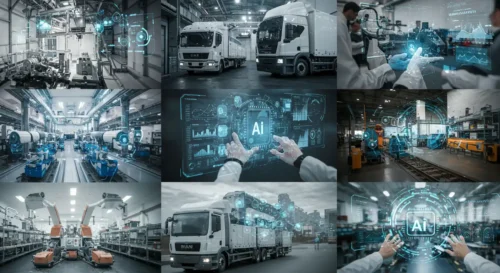
The influence of AI is not uniform across all sectors of the economy. Each industry faces unique challenges and opportunities presented by AI adoption. This section provides an overview of AI’s impact on several key sectors:
Manufacturing and Industry:
- Threats: Job displacement in assembly line work, quality control, and other manual tasks is a significant concern. The need for specialized technical skills to operate and maintain AI-powered machinery could create a skills gap.
- Opportunities: Increased automation leads to higher productivity, reduced costs, and improved product quality. AI-driven predictive maintenance minimizes downtime and optimizes production schedules. Robotics and AI can also improve workplace safety by handling hazardous tasks. Examples: Automated assembly lines, robotic welding, AI-powered quality control systems, predictive maintenance algorithms.
Transportation and Logistics:
- Threats: Truck drivers, delivery drivers, and warehouse workers face potential job displacement due to self-driving vehicles and automated warehouse systems.
- Opportunities: Autonomous vehicles can improve efficiency, reduce accidents, and lower transportation costs. AI-powered route optimization and logistics management can streamline supply chains and improve delivery times. Examples: Self-driving trucks, delivery drones, AI-powered route planning software, automated warehouse management systems.
Finance and Banking:
- Threats: Jobs involving routine financial analysis, data entry, and customer service are susceptible to automation. Algorithmic trading could lead to market instability if not properly regulated.
- Opportunities: AI enhances fraud detection, risk management, and personalized financial advice. Algorithmic trading can improve market efficiency (though it also presents risks). AI-powered chatbots and virtual assistants can provide 24/7 customer support. Examples: Fraud detection algorithms, robo-advisors, AI-powered loan underwriting systems, algorithmic trading platforms.
Healthcare:
- Threats: While complete automation of medical professions is unlikely, AI could automate certain diagnostic tasks, potentially impacting radiologists, pathologists, and other specialists. Ethical concerns regarding patient privacy and data security are paramount.
- Opportunities: AI can improve diagnostic accuracy, accelerate drug discovery, and personalize treatment plans. AI-powered tools can assist surgeons with complex procedures and improve patient outcomes. Examples: AI-powered image analysis for disease detection, drug discovery platforms, robotic surgery systems, AI-powered personalized medicine platforms.
Education:
- Threats: While AI is unlikely to replace teachers entirely, it could automate certain administrative tasks and create personalized learning experiences, potentially impacting some administrative and support staff roles.
- Opportunities: AI can personalize learning experiences, provide individualized feedback to students, and automate administrative tasks, freeing up teachers to focus on instruction and student interaction. AI-powered tools can also improve access to education for students in remote areas or with disabilities. Examples: AI-powered personalized learning platforms, automated grading systems, virtual tutors, AI-powered accessibility tools.
Service Sector:
- Threats: Jobs in customer service, retail, and food service are vulnerable to automation through chatbots, self-checkout kiosks, and robotic automation.
- Opportunities: AI-powered chatbots and virtual assistants can provide 24/7 customer support and personalize customer experiences. Robots can automate tasks in restaurants and other service settings, improving efficiency and hygiene. Examples: AI-powered chatbots, self-checkout kiosks, robotic servers, personalized recommendation systems.
Cross-Sectoral Analysis:
Across all sectors, some common themes emerge:
- Data is Key: AI relies on vast amounts of data to function effectively. Industries with readily available data are more likely to see rapid AI adoption.
- The Need for Human Oversight: Even with advanced AI systems, human oversight remains crucial. Humans are needed to interpret results, make ethical decisions, and handle complex situations that AI cannot address.
- The Importance of Reskilling: Workers in all sectors need to adapt to the changing demands of the job market by acquiring new skills in areas such as data literacy, digital technologies, and critical thinking.
By understanding the specific threats and opportunities presented by AI in each sector, businesses, governments, and individuals can better prepare for the future of work and maximize the benefits of this transformative technology.
7. The Role of Government and Business in Adapting to Change
The successful integration of AI into the workforce requires a collaborative effort from both governments and businesses. Proactive policies and responsible implementation strategies are crucial to mitigate the negative impacts and maximize the benefits of this technological transformation.
Government Policies Regarding Supporting Reskilling and Creating New Jobs:
Governments play a vital role in facilitating a smooth transition to an AI-driven economy. Key policy areas include:
- Investing in Education and Training: Governments should prioritize investments in education and training programs that equip workers with the skills needed for the future job market. This includes:
- Funding for STEM education (Science, Technology, Engineering, and Mathematics) at all levels.
- Support for vocational training programs focused on AI-related skills, such as data science, software development, and robotics.
- Creating accessible online learning platforms and resources for lifelong learning and reskilling.
- Promoting Digital Literacy: Ensuring widespread digital literacy is essential for all citizens to participate in the digital economy. This includes providing access to affordable internet connectivity and digital devices, as well as offering training programs on basic digital skills.
- Supporting Displaced Workers: Governments should provide support for workers displaced by automation, including unemployment benefits, job placement services, and retraining opportunities.
- Creating New Job Opportunities: Governments can stimulate the creation of new jobs in emerging sectors related to AI, such as AI development, data analysis, and AI ethics. This can be achieved through targeted investments in research and development, tax incentives for businesses in these sectors, and support for startups and small businesses.
- Developing Regulatory Frameworks: Governments need to develop clear regulatory frameworks for the use of AI, addressing issues such as data privacy, algorithmic bias, and ethical considerations. These frameworks should be flexible enough to adapt to the rapidly evolving nature of AI technology.
The Role of Business in AI Implementation and Ensuring Ethical Technology Use:
Businesses also have a crucial role to play in responsibly implementing AI and mitigating its potential negative impacts:
- Investing in Employee Training and Development: Businesses should invest in training and development programs to help their employees adapt to the changing demands of their roles and acquire new skills.
- Promoting Human-AI Collaboration: Businesses should focus on implementing AI in a way that augments human capabilities rather than simply replacing human workers. This involves designing workflows that leverage the strengths of both humans and AI.
- Ensuring Ethical AI Development and Deployment: Businesses should develop and adhere to ethical guidelines for the development and deployment of AI systems. This includes addressing issues such as data privacy, algorithmic bias, transparency, and accountability.
- Communicating Transparently with Employees: Businesses should communicate openly and transparently with their employees about the impact of AI on their jobs and provide support for those affected by automation.
- Engaging in Social Dialogue: Businesses should engage in dialogue with labor unions, government agencies, and other stakeholders to ensure that AI is implemented in a way that benefits society as a whole.
Importance of Social Dialogue and Cooperation:
Effective adaptation to the changing job market requires strong social dialogue and cooperation between all stakeholders, including government, business, labor unions, educational institutions, and civil society organizations. This collaborative approach can ensure:
- Shared Understanding of the Challenges and Opportunities: Open communication and dialogue can help all stakeholders understand the potential impacts of AI and identify the best strategies for mitigating risks and maximizing benefits.
- Development of Effective Policies and Programs: Collaboration between government, business, and labor unions can lead to the development of more effective policies and programs for reskilling, job creation, and social support.
- Building Public Trust in AI: Transparent communication and ethical guidelines can help build public trust in AI technology and ensure its responsible use.
By working together, governments, businesses, and other stakeholders can navigate the challenges and opportunities presented by AI and create a future of work that is both productive and equitable.
8. Conclusion
The integration of Artificial Intelligence into the workplace represents a profound shift with far-reaching implications for the job market. This exploration has revealed a complex landscape of both threats and opportunities. While concerns about job displacement due to automation are valid, it’s crucial to recognize that AI’s primary impact is likely to be the transformation of existing roles and the creation of entirely new ones.
Key findings regarding AI’s impact on the job market include:
- Certain jobs involving routine tasks, physical labor, and data processing are highly susceptible to automation.
- The impact of AI will be felt across various skill levels, requiring workers at all levels to adapt and acquire new skills.
- AI presents significant opportunities for increasing productivity, optimizing business processes, and creating new products and services.
- Addressing social and ethical implications, such as inequality, algorithmic bias, and privacy concerns, is crucial for ensuring a just and equitable transition.
- Collaboration between governments, businesses, and other stakeholders is essential for effectively managing the changes brought about by AI.
The central theme emerging from this analysis is the critical need for adaptation and preparation for change. Individuals, businesses, and governments must proactively embrace lifelong learning, invest in reskilling and upskilling initiatives, and foster a culture of continuous improvement. By focusing on developing uniquely human skills, such as critical thinking, creativity, communication, and complex problem-solving, individuals can position themselves for success in the evolving job market.
A cautiously optimistic outlook on the future of AI is justified, as it has the potential to enhance productivity, drive innovation, and foster economic growth. By responsibly implementing AI and addressing its ethical implications, we can improve working conditions, enhance human capabilities, and tackle pressing global challenges like climate change and healthcare. The focus should be on collaboration and foresight to ensure that the benefits of AI are widely shared across society.
9. Frequently Asked Questions (FAQ)
This section addresses common questions regarding AI’s impact on employment.
-
What are the most reliable job displacement predictions and statistics?
Predictions vary depending on the methodology and scope of the study. Organizations like McKinsey, the World Economic Forum, and the OECD have published reports estimating potential job losses and transformations. It’s important to consider these as estimates and focus on the overall trends rather than specific numbers. The consensus is that significant change is coming, but the exact scale and timeline are still uncertain.
-
What skills will be most needed in the future job market?
Key skills include:
- Technical Skills: Data analysis, AI/ML development, software development, cybersecurity.
- Soft Skills: Critical thinking, problem-solving, communication, creativity, collaboration, adaptability.
- Digital Literacy: Proficiency in using digital tools and technologies.
-
What is the role of education and training in preparing for the future of work?
Educational institutions need to update curricula to incorporate AI literacy, data science, and computational thinking. Vocational training programs should focus on practical AI-related skills. Lifelong learning and continuous upskilling will be crucial for workers to adapt to evolving job requirements.
-
What are the main ethical concerns about AI in the workplace?
Key concerns include:
- Algorithmic Bias: Ensuring fairness and avoiding discriminatory outcomes.
- Data Privacy and Surveillance: Protecting employee data and preventing misuse of surveillance technologies.
- Transparency and Explainability: Understanding how AI systems make decisions.
- Job Security and Worker Well-being: Mitigating anxiety and providing support for displaced workers.
-
What is the potential for AI to create new jobs?
AI will create new roles in areas such as:
- AI development and engineering.
- Data science and analysis.
- AI ethics and governance.
- Prompt engineering and AI training.
- AI-related consulting and support services.
-
How will AI specifically impact different industries?
As discussed in Section 6, the impact will vary by sector. Industries with readily available data and routine tasks are more susceptible to automation. However, AI also offers sector-specific opportunities for increased efficiency, innovation, and new product/service development.
-
What is the role of government and businesses in managing the transition?
Governments should invest in education, training, and social safety nets. They should also develop ethical guidelines and regulations for AI use. Businesses should prioritize employee training, ethical AI implementation, and transparent communication with their workforce. Collaboration between all stakeholders is essential for a smooth and equitable transition.
